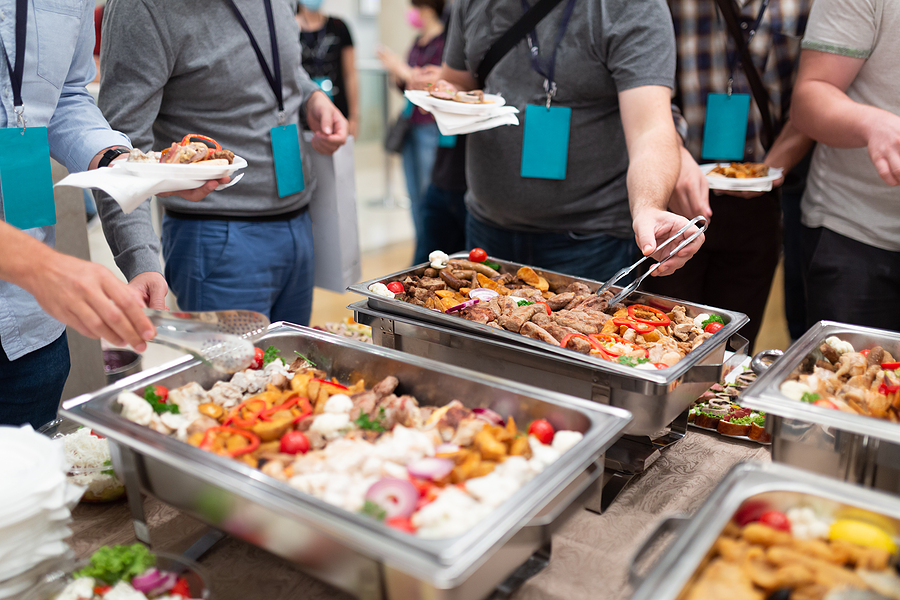Catering a party is an art form, one that requires balancing a variety of tastes and preferences. However, the challenge intensifies when special dietary needs come into play. Whether it’s food allergies, food intolerances, diabetes, vegetarianism, veganism, or specific dietary restrictions, a thoughtful host must consider these factors to ensure everyone at the party can enjoy the food without worry.
This blog post delves into the art of inclusive catering – a guide to meeting special dietary needs while throwing a party that no one will forget. Let’s explore how to create a menu that is as diverse and inclusive as your guest list.

Catering For Those with Special Dietary Needs
Making Sure Everyone is Catered To
The first step to inclusive catering is to make sure that everyone’s dietary needs are met. This means asking your guests ahead of time what their dietary preferences/requirements are and then making sure the menu accommodates those restrictions. It also helps to provide a variety of food items so that people have options when selecting what they would like to eat. When creating the menu, think about what flavors and ingredients will work well together while still meeting everyone’s dietary needs.
Lactose-Friendly Options
When catering to those with lactose intolerance, it’s important to provide dishes that are free of dairy products. This can include vegan and vegetarian-friendly options (such as veggie burgers, tofu stir-fries, and lentil curries) as well as other delicious dishes like roasted vegetables or salads. Additionally, using plant-based milk options such as almond, coconut, or oat milk in dishes is a great way to make sure that those with lactose issues can still enjoy the meal.
Gluten-Free Options
Gluten-free eating has become increasingly popular in recent years, with many people opting for a gluten-free diet due to food intolerances or allergies. When catering for a party with guests who live a gluten-free lifestyle, it’s important to provide a variety of options that don’t contain gluten. This might include dishes made with gluten-free flour options such as almond flour, coconut flour or buckwheat flour. You could also offer paleo-friendly meals such as grilled meats and vegetables or salads without croutons or breadcrumbs.
Vegetarian and Vegan Options
When catering for vegetarians or vegans at a party, it’s important to provide meal options that are both delicious and satisfying. This could include dishes such as roasted vegetables with quinoa, black bean burgers, veggie noodle bowls or salads with plant-based proteins like tofu and tempeh. When creating vegan dishes, be sure to check the ingredients list to make sure there are no animal products present.
Diabetic-Friendly Options
When catering for guests with diabetes, it’s important to keep in mind that they may need meals with lower sugar content or carbohydrates. This could include dishes such as grilled fish with roasted vegetables, salads made with heart-healthy greens and proteins like chickpeas, or a roasted vegetable dish with quinoa. You can also provide options like sugar-free desserts to satisfy everyone’s sweet tooth without compromising dietary restrictions.
Final Thoughts
At the end of the day, catering a party is all about creating an enjoyable experience for your guests. To make sure everyone feels included and respected, it’s important to consider special dietary needs when creating a catering menu. With thoughtful planning and understanding, you can create an inclusive experience that will make your party truly memorable. You can always rely on your professional caterers to help you customize the perfect menu for your occasion.
Would you like to learn more about how our professional catering managers can ensure a memorable meal and experience for your guests? Contact Food For Thought Catering at 678-340-0510 for professional large group catering in Peachtree City, Georgia. We custom cater for any size of event or party, from weddings and birthdays to conferences, galas, and more.
Related Posts:
Helpful Tips for Kosher Catering
Healthy Catering Menu Ideas
How to Safely Cater Meals for Your Staff
